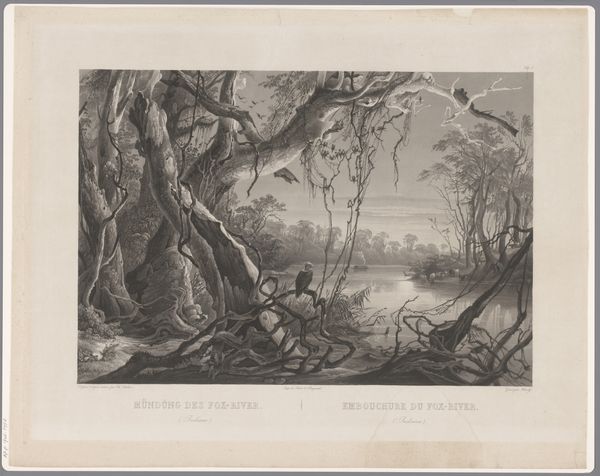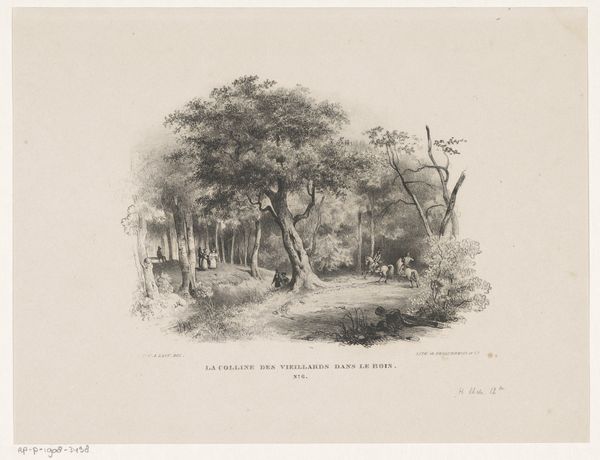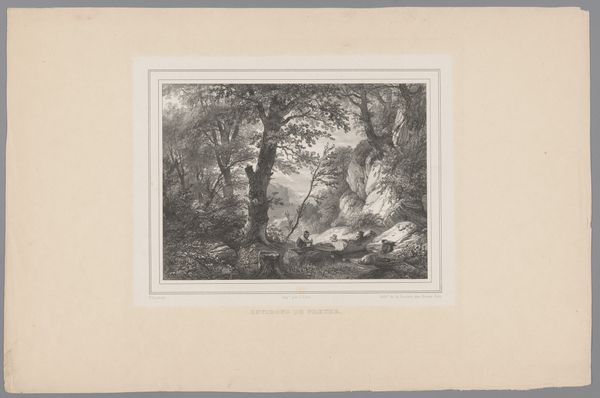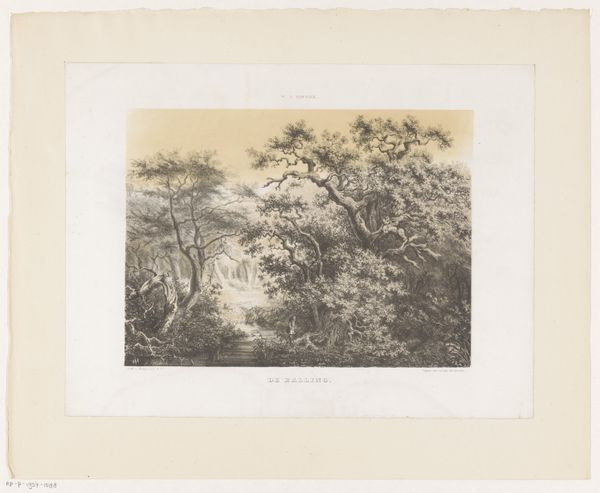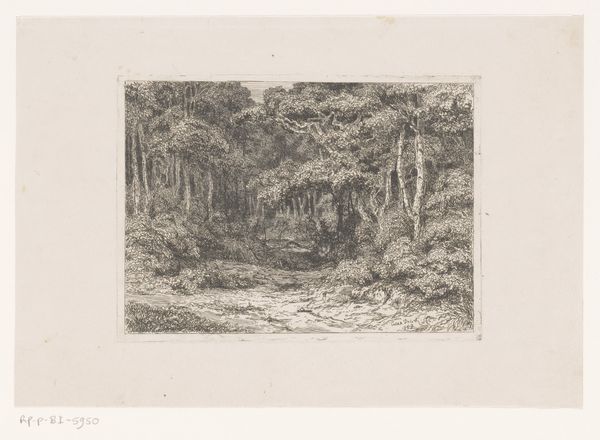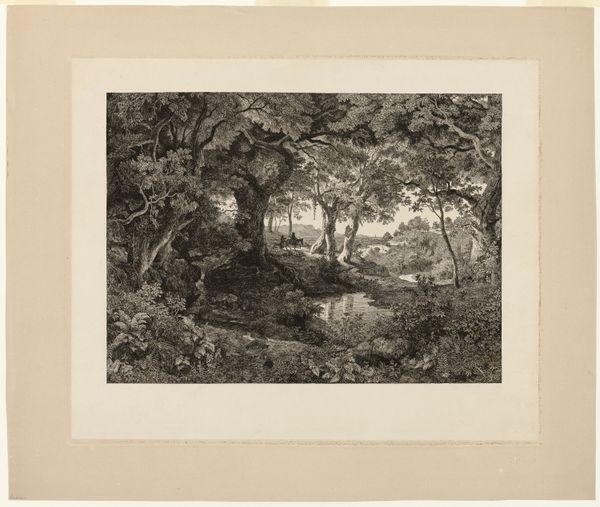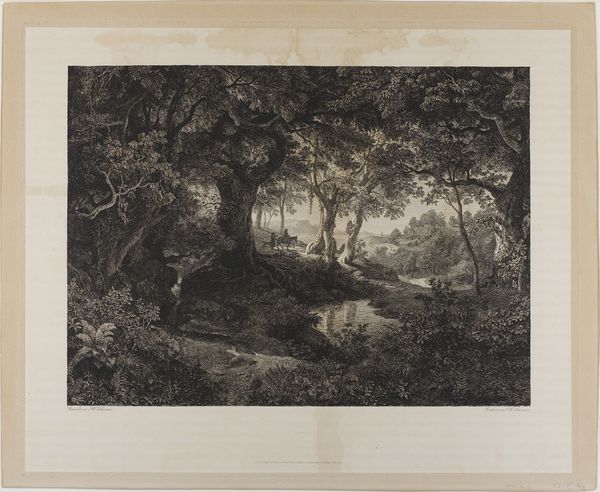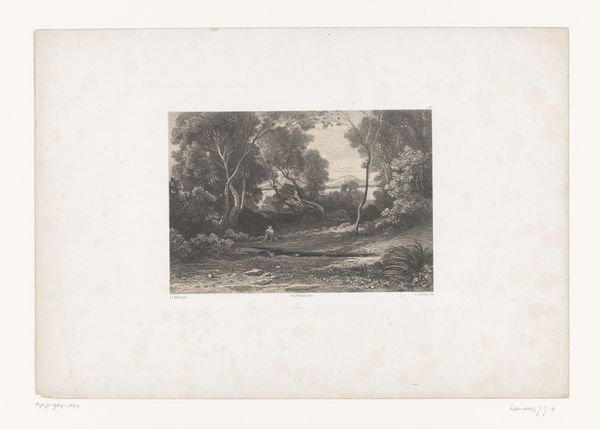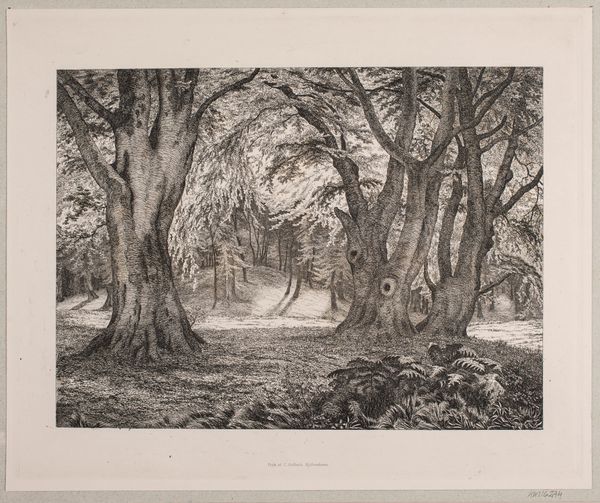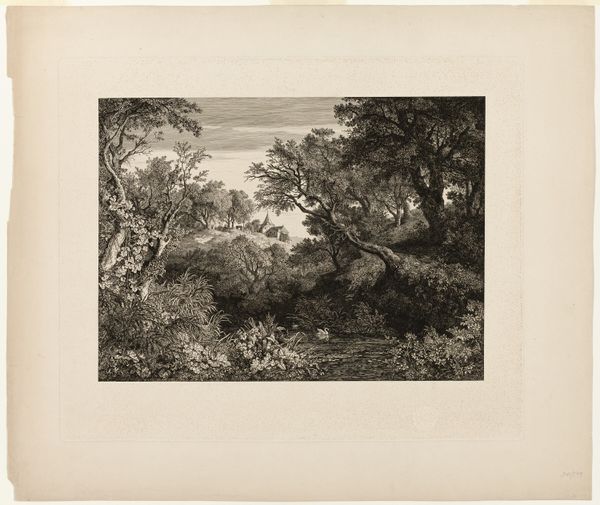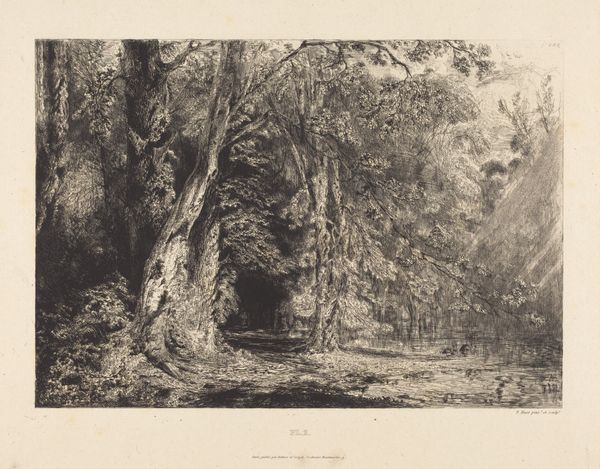
Dimensions: height 339 mm, width 428 mm
Copyright: Rijks Museum: Open Domain
Curator: What we have here is a work by Johannes Warnardus Bilders, titled "Poel in het bos bij Doorwerth te Gelderland," created sometime between 1867 and 1874. It’s an etching. Editor: It feels heavy, dense almost. The light struggles to penetrate, leaving the depths in shadow. What strikes me most is the palpable stillness—a quiet moment captured. Curator: Precisely. Bilders, along with other artists of the Hague School, were dedicated to depicting the Dutch landscape as they saw it, but also reflecting on their rapidly changing country and a society facing real ecological anxiety during that period. Editor: And you can see it in the contrast. The very structured yet twisting boughs and reaching branches frame this calm pond. Is the artist contrasting this still untamed world with what was perceived as civilization’s encroaching structure? Curator: I agree. His art also intersects with discourses around rural labor and poverty, the working class being so heavily intertwined with those landscapes. So he has some commentary on class differences through the chosen perspective as well. Editor: There's a Romantic sensibility at play. Though rooted in Realism, there's an undeniably constructed feel of nature's beauty untouched—or perhaps, at least, struggling. The ducks are at peace; their reflections undisturbed in the pool of water. Is that their world alone that’s undisturbed, however? Curator: Consider how Bilders utilized his medium. He uses those dense marks to draw our attention. But the linear aspect created by the trees, is very thought-provoking from my standpoint. He’s pulling in those threads from the social climate and rural struggles from this piece alone. Editor: Yes. Looking closely, I find the lines, their direction and weight, so considered. They construct a mood as much as a scene. There's an elegant melancholy that lingers. Curator: It definitely encourages a further look into the socioeconomic politics from that time frame. A compelling narrative is formed via what some might overlook at first glance as a peaceful forest landscape. Editor: Absolutely. The careful balance he strikes between meticulous observation and underlying feeling really leaves a lasting impression. It almost transforms the way we view nature as it relates to civilization.
Comments
No comments
Be the first to comment and join the conversation on the ultimate creative platform.
